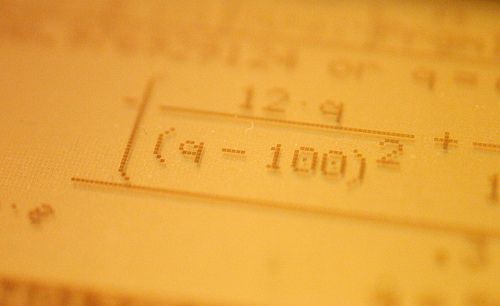|
|
| (18 intermediate revisions not shown) |
| Line 1: |
Line 1: |
| | + | Hey buddy found out you little secret, you've had two jobs over summer: |
| | | | |
| | + | [[Image:TheKing.jpg]] |
| | | | |
| - | ==Formulation of the problem==
| |
| - | As described earlier, catheter-associated urinary tract infection (CAUTI) in the clinical setting is a prevalent problem with extensive economic impact. The underlying cause of many such infections can be attributed to the formation of biofilm, by aggregating-bacteria on the surface of urinary catheters.
| |
| | | | |
| - | [[Image: IC07_QS.png|right|thumb|500px| Role of AHL (HSL) quorum-sensing in biofilm formation]]
| |
| | | | |
| - | Infector Detector (ID) is a simple biological detector, which serves to expose bacterial biofilm. It functions by exploiting the inherent AHL (Acetyl Homoserine Lactone) production employed by certain types of quorum-sensing bacteria, in the formation of such structures.<br>
| |
| | | | |
| - | Our project attempts to improve where previous methods of biofilm detection have proven ineffective: first and foremost, by focussing on the sensitivity of the system, to markers of biofilm: in this case, low levels of AHL production (which represents the bacterial "chatter" of such aggregating bacteria).
| |
| | | | |
| - | In doing so, a complete investigation of the level of sensitivity to AHL concentration needs to be performed - in other words, what is the minimal AHL concentration for appreciable expression of a chosen reporter protein. Furthermore, establish a functional range for possible AHL detection. How does increased AHL concentration impact on the maximal output of reporter protein?<br>
| |
| - | Finally, how can the system performance be tailored, by exploiting possible state variables (e.g. varying initial LuxR concentration and/or concentration of pLux promoters).
| |
| | | | |
| - | The system performance here revolves most importantly around AHL sensitivity; however, the effect on the maximal output of fluorescent reporter protein and response time is, likewise, of great importance.
| |
| | | | |
| - | ==Approach==
| + | <center>{{Click || image = DataAnalysis.jpg| link = Imperial/Dry_Lab |
| - | A deterministic, continuous approximation is considered.
| + | | width = 200px| height = 200px}}</center> |
| - | | + | |
| - | ==[https://2007.igem.org/User:Jjk105/Simulations Simulations]==
| + | |
| - | | + | |
| - | ==Establishing a model==
| + | |
| - | | + | |
| - | ===Approach===
| + | |
| - | At reasonably high molecular concentrations of the state variables, a continuous model can be adopted, which is represented by a system of ordinary differential equations.
| + | |
| - | | + | |
| - | It is for this reason that our approach to modelling the system follows a deterministic, continuous approximation. In developing this model, we were interested in the behaviour at steady-state, that is when the system has equilibrated and the concentrations of the state variables remain constant.
| + | |
| - | | + | |
| - | We can condition the system in various manners, but for the purposes of our project, we will seek a formulation which is valid for both constructs considered, i.e. the governing equations are a represenation of both constructs.
| + | |
| - | | + | |
| - | The only difference is with regards to the parameter k<sub>1</sub>, the maximum transcription rate of the constitutive promoter (pTET) in Construct 1. <br> Thus k<sub>1</sub> = 0 for construct 2 (which lacks pTET).
| + | |
| - | | + | |
| - | Furthermore, we generate two models based upon the available system energy:
| + | |
| - | | + | |
| - | '''Model 1''': Infinite Energy<br>
| + | |
| - | '''Model 2''': Limited Energy<br>
| + | |
| - | | + | |
| - | The system kinetics are determined by the following coupled-ODEs. For a derivation of the governing equations, please access
| + | |
| - | [https://2007.igem.org/wiki/index.php?title=Imperial/Dry_Lab/Modelling/Model_Derivation Model Derivation]
| + | |
| - | | + | |
| - | [[Image:IC07 EModel.png|thumb|left|500px|Model 2, an energy-dependent network, where the dependence on energy assumes Hill-like dynamics]]
| + | |
| - | | + | |
| - | ==Sensitivity Analysis?==
| + | |

